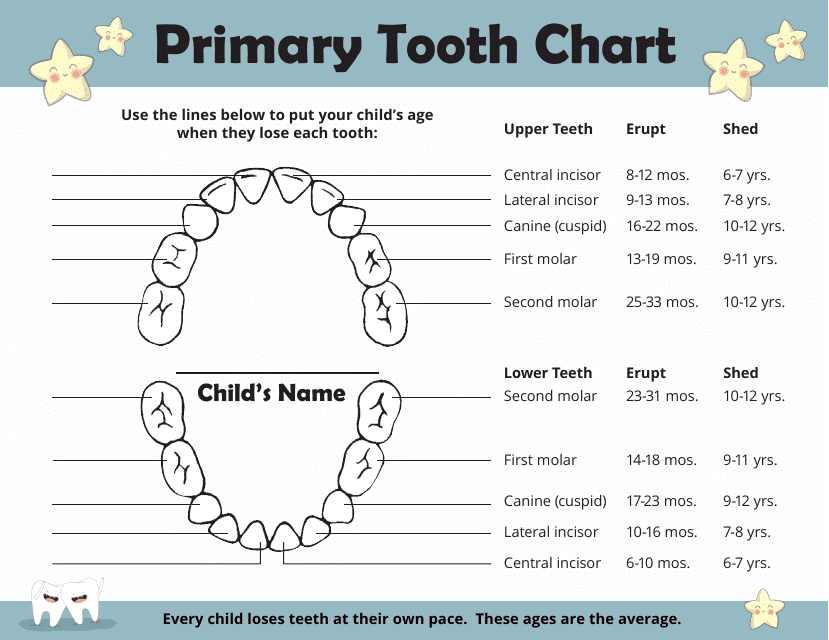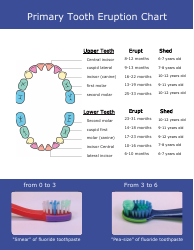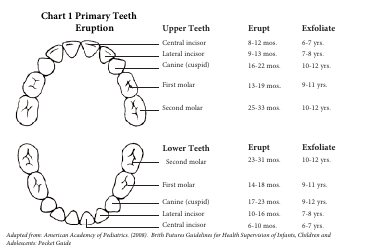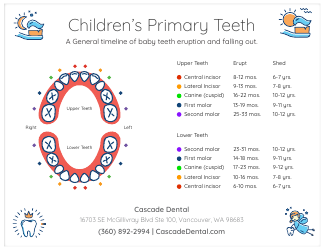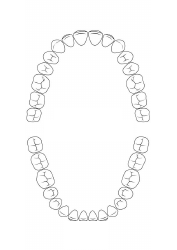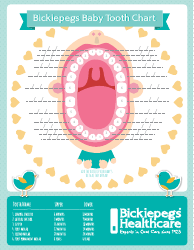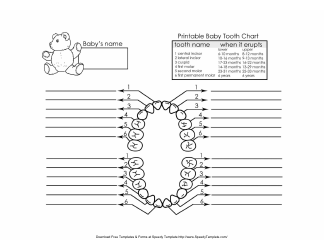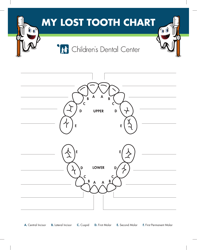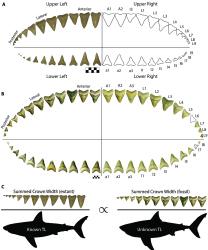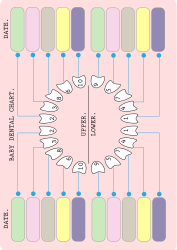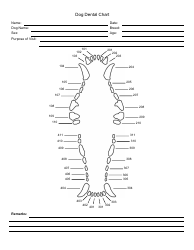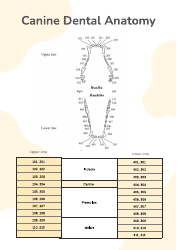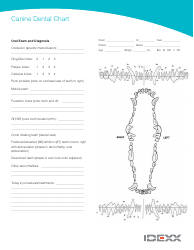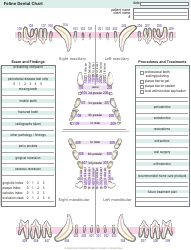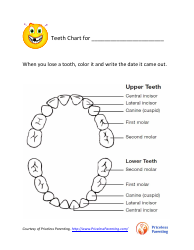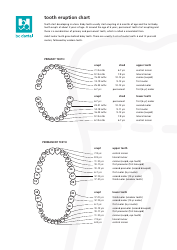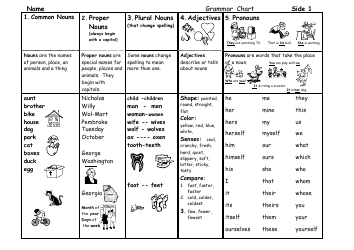Primary Tooth Chart
The Primary Tooth Chart is used by dentists to track and record the eruption and loss of primary (baby) teeth in children. It helps monitor the development of the child's teeth and ensures proper dental care.
The primary tooth chart is usually filled out by a pediatric dentist or a dental hygienist.
FAQ
Q: What is a primary tooth?
A: A primary tooth is also known as a baby tooth or deciduous tooth. It is the first set of teeth that children develop.
Q: How many primary teeth are there?
A: There are usually 20 primary teeth in total.
Q: At what age do children start getting their primary teeth?
A: Children usually start getting their primary teeth between the ages of 6 months to 1 year.
Q: What is a primary tooth chart?
A: A primary tooth chart is a visual representation of the order in which the primary teeth erupt and are lost.
Q: Why is a primary tooth chart important?
A: A primary tooth chart is important because it helps parents and caregivers track the development and eruption of their child's teeth.
Q: What are the different types of primary teeth?
A: The different types of primary teeth include incisors, canines, and molars.
Q: When do primary teeth start to fall out?
A: Primary teeth start to fall out around the age of 6 or 7, making way for the permanent teeth to come in.
Q: Do all children lose their primary teeth at the same time?
A: No, the timing of primary teeth loss can vary for each child.
Q: Should primary teeth be brushed regularly?
A: Yes, primary teeth should be brushed regularly with a soft toothbrush and a small amount of toothpaste.
Q: What happens if a primary tooth is lost too early?
A: If a primary tooth is lost too early, it can affect the eruption and alignment of the permanent teeth.
